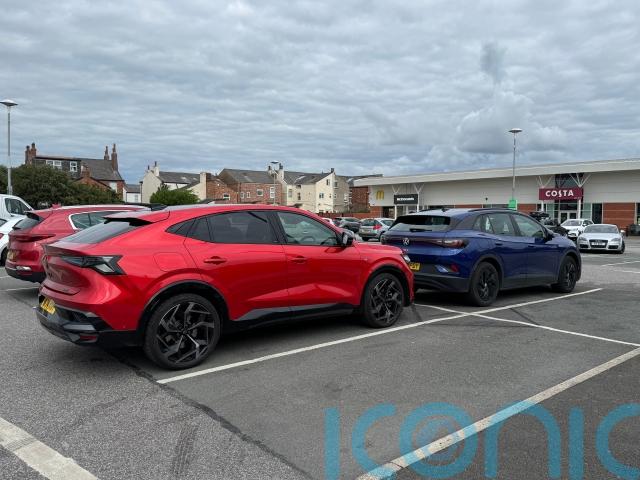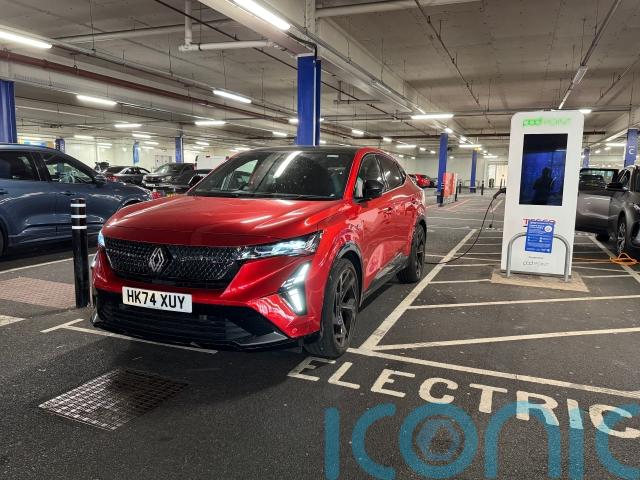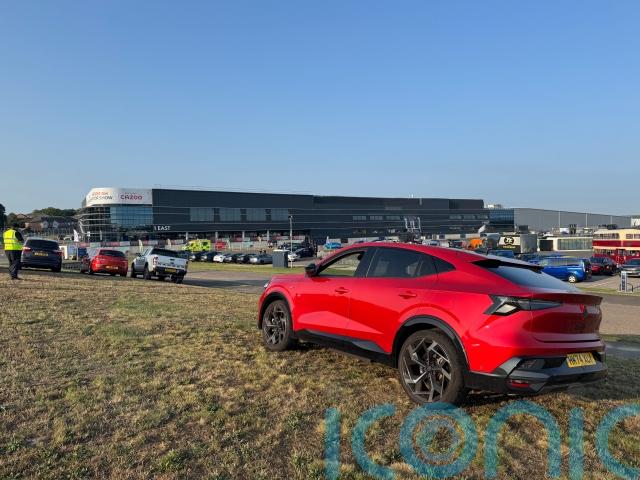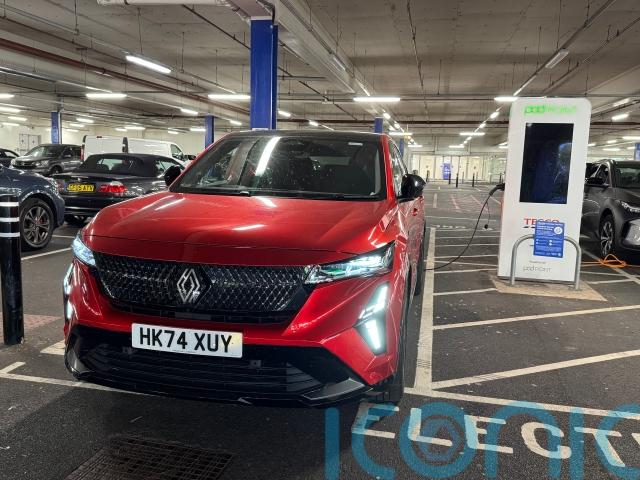
Over the past 25 years in the motoring world – yes, I’m showing my age now – I’ve been fortunate enough to spend a lot of time behind the wheel of an eclectic mix of long-term test cars. From the premium polish of Audi and Mercedes to the dependable familiarity of mainstream brands, I’ve experienced the best—and occasionally the worst—that manufacturers have to offer. But in all that time, Renault is a brand I’d somehow never run long-term. Until now.
That’s not to say the French marque hasn’t been on my radar. Far from it. I’ve always had a soft spot for Renault. Growing up, one of the first genuinely exciting hot hatches I drove was the legendary Clio Williams—raw, raucous, and utterly intoxicating. And then there was the Renault 5 GT Turbo, a pocket rocket that defined a generation and left a significant mark on my teenage years. I still remember mates turning up in theirs, at the time, a tad envious of all the boy-racer modifications they’d made which undoubtedly ruined them, but for an 18-year-old car fan, it didn’t matter, they looked awesome.

Back then, Renaults were fun, characterful, and sometimes a bit flaky—but they had charm. Fast-forward to today, and the brand feels like it’s entered a more mature, considered phase. Gone are the days of flimsy trim and eccentric ergonomics. Today’s Renaults feel more solidly engineered, thoughtfully equipped, and daringly styled. That brings me to the newest addition to our long-term fleet: the Renault Rafale.
I’ll be honest—when I first saw the name on the allocation list, it didn’t immediately register. Rafale? It sounded more like a Teenage Mutant Ninja Turtle than a family crossover. However, on further investigation, it’s a nod to a 1930s aircraft built by Caudron-Renault. But as the car rolled onto the driveway, finished in a bold Flame Red paintwork, I was pretty impressed.
There’s no denying the Rafale has presence. It’s a sharp, well-proportioned SUV-coupe with a stance that suggests it means business. The aggressive front grille, flanked by angular headlights and a complex, textured surface, gives it a strong visual identity. The bold Renault badge takes centre stage, and the surfacing across the body is crisp and sophisticated.
Those large alloy wheels fill the arches nicely, and the sweeping coupe-style roofline adds a sense of motion even when it’s standing still. In a crowded SUV market, the Rafale doesn’t blend in.
Under the bonnet of our test car is Renault’s latest E-Tech plug-in hybrid system, pairing a 1.2-litre turbocharged three-cylinder petrol engine with a 22kWh battery and dual electric motors. The combined output is a healthy 300bhp, which is more than enough to get this sizeable SUV shifting with real purpose.
The headline figures are impressive. A claimed 0–60mph time of just over six seconds, a WLTP electric-only range of up to 59 miles, and official CO₂ emissions of just 29g/km. For company car drivers, that low emissions figure is going to be a big draw, especially when paired with the tax advantages of a plug-in hybrid.
But this isn’t just a numbers game. Out on the road, the power delivery is smooth and linear. Electric torque fills in the gaps beautifully, masking any hesitation from the small petrol engine. Around town, it glides near-silently in EV mode. On motorways, it’s quiet and composed. And when you want to press on, it responds with surprising urgency.

It’s too early to make firm conclusions about real-world efficiency, but early indications are promising. Short trips are easily completed in EV mode alone, and even when the petrol engine kicks in, it does so unobtrusively. A full charge on a three pin charger tops it up overnight with no fuss.
Step inside the Rafale and the surprises continue. Renault has taken a bold step up in terms of cabin quality and design. This particular car is the high-spec Atelier Alpine trim, and it feels every bit the flagship. Materials are generally excellent, with soft-touch plastics, Alcantara accents, and tasteful ambient lighting all lending a premium feel.
Two large digital screens dominate the dashboard: a 12-inch portrait-style infotainment screen and a 12.3-inch driver display. Both are sharp and responsive, running Google’s built-in operating system, which means native Google Maps, Assistant and Play Store access. It’s intuitive and familiar, a welcome shift from the clunky, bespoke systems many rivals still insist on using.
Storage is another area where the Rafale impresses. It’s a bit of a Tardis. The front cabin is loaded with clever storage solutions—large door bins, a deep central cubby, cupholders, and even a concealed space beneath the sliding grip ahead of the armrest. It’s clear Renault has spent time considering how people actually use their cars.
Rear seat space is generous, too. Despite the coupe-style roofline, headroom is more than adequate and legroom is plentiful. The boot is usefully shaped and flat-floored, with enough space for family weekends away or a decent supermarket haul. The only slight compromise is the raised boot floor to accommodate the hybrid battery, but it’s not a dealbreaker.
One of my favourite features so far is the electrochromic panoramic glass roof. Instead of a bulky sunshade, this high-tech system uses electric current to tint the glass on demand. You can frost just the rear portion or the whole panel in stages. It’s the same technology used in aircraft windows and in the latest Nissan Leaf, and it works brilliantly—offering light and openness without sacrificing headroom or privacy.

There are a couple of early niggles, but they’re things that are more personal to me. Firstly, on the right-hand side of the steering wheel, there are two stalks – one for the gear shifter, and another for the wiper controls, then underneath that, there is the remote for the radio controls. The separate ‘stalk’ for the volume settings feels a bit dated to me, and I’m not a fan of too many stalks on one side of the steering wheel, as it feels unbalanced and a bit cluttered. Also, the plastic cover around the speaker on the front doors protrudes slightly when you open it, and I’ve knocked it with my foot a few times getting out. Again, nothing major, it might get a bit tiresome after a while, it’s already starting to get a bit grubby.
It’s early days, but the Rafale is off to an impressive start. It looks the part, it’s packed with clever tech, and it delivers the kind of real-world electric range that makes a genuine difference to day-to-day driving. More importantly, it feels like a car that’s been built with care and purpose—something that hasn’t always been said about Renault in recent years.

Of course, the real test will come over the weeks and months ahead. How does it handle the school run, the tip run, long motorway hauls, and frustrating commutes? How does the hybrid system cope in winter? Will the interior rattle over time, or will it stay as tight and refined as it feels now?
One thing’s for certain: I’m glad it’s here. The Rafale might not have the brand cachet of a German badge, but it’s carving out its own space—with bold styling, clever engineering, and a level of confidence that feels genuinely refreshing. And for a Renault, that might just be the biggest surprise of all.
Subscribe or register today to discover more from DonegalLive.ie
Buy the e-paper of the Donegal Democrat, Donegal People's Press, Donegal Post and Inish Times here for instant access to Donegal's premier news titles.
Keep up with the latest news from Donegal with our daily newsletter featuring the most important stories of the day delivered to your inbox every evening at 5pm.